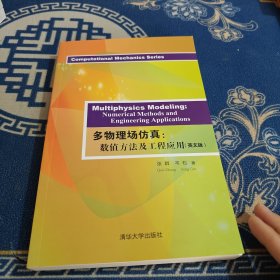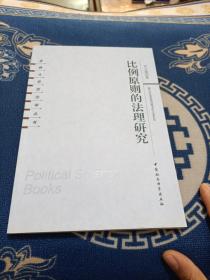
多物理场仿真:数值方法及工程应用(英文版)
正版现货实物拍照库存书
¥ 145 九五品
仅1件
作者张群、岑松 著
出版社清华大学出版社
出版时间2016-10
版次1
装帧平装
上书时间2024-04-13
- 在售商品 暂无
- 平均发货时间 3小时
- 好评率 暂无
- 最新上架
商品详情
- 品相描述:九五品
图书标准信息
- 作者 张群、岑松 著
- 出版社 清华大学出版社
- 出版时间 2016-10
- 版次 1
- ISBN 9787302450764
- 定价 79.00元
- 装帧 平装
- 开本 16开
- 纸张 胶版纸
- 页数 424页
- 正文语种 简体中文
- 【内容简介】
-
本书为英文版。书中详细介绍了工程中常见的结构、流体、温度、电磁、噪声等物理场间的耦合问题,论述了强耦合方法、弱耦合方法以及跨程序之间的耦合方法。对不同耦合边界条件及其数值实现方法进行了深入讨论,涉及流-固耦合、流-固-温度场耦合、电磁-流-固-热耦合等复杂耦合问题。书中还列举了汽车工程、航空航天工程、旋转机械、微机电系统、生物医学工程等领域的 20多个实际耦合分析案例。本书提供了从耦合理论、方法、软件开发到工程实践的较为全面综合的知识和工程实践体系,可供相关学科和行业的科研人员、工程技术人员、软件开发人员阅读参考,也可作为理工科相关课程的研究生教材。
- 【目录】
-
Contents
Preface v
Acknowledgments vii
1 The physics models 1
1.1 Heat flow fundamentals 2
1.2 Fluid dynamics 6
1.3 Structural mechanics 26
1.4 Electromagnetic field 59
1.5 Acoustic analysis 93
2 Physics coupling phenomena and formulations 97
2.1 Introduction to coupling problems 98
2.2 General coupling equations 98
2.3 Types of coupling interfaces 102
2.4 Classification of coupling phenomena 103
2.5 The coupling matrices among physics models 104
2.6 Thermal–stress coupling 104
2.7 Fluid–structure interaction 107
2.8 Conjugate heat transfer problem 112
2.9 Acoustic–structure coupling 113
2.10 Piezoelectric analysis 115
2.11 Electrostatic–structure coupling 116
2.12 Magneto–structure coupling 116
2.13 Magneto–fluid coupling 117
2.14 Electrothermal coupling 118
2.15 Magnetic–thermal coupling 120
2.16 Summary of the coupling types 120
3 The coupling methods 125
3.1 Introduction to coupling methods 125
3.2 The strong coupling method 126
3.3 Weak coupling methods 133
3.4 Comparisons of the strong and weak coupling methods 151
3.5 Time integration scheme for transient multiphysics problems 152
Contents
4 Nonstructural physics with moving boundary 157
4.1 The moving domain problem in multiphysics simulation 157
4.2 Advanced morphing method 159
4.3 Automatic remeshing technology 160
4.4 Mesh controls for rotating machinery 164
4.5 Treatment for pinched flow problems 167
4.6 Examples for mesh control 167
5 Stabilization schemes for highly nonlinear problems 177
5.1 An overview of stabilization methods 177
5.2 Stabilization methods in spatial domain 178
5.3 Stabilization in the time integration scheme 191
5.4 Underrelaxation of the solution vector 197
5.5 Capping for the solution 198
5.6 Trade off the stability, accuracy, and efficiency 199
6 Coupling simulation for rotating machines 201
6.1 Reference frames 201
6.2 General coupling boundary conditions 203
6.3 Governing equations in body-attached rotating frame 209
6.4 Multiple frames of references for rotating problems 210
6.5 Morphing technology for rotating problems 219
6.6 Multiphysics simulation for rotating machines 220
7 High-performance computing for multiphysics problems 227
7.1 The challenges in large-scale multiphysics simulation 227
7.2 Parallel algorithm for the strong coupling method 228
7.3 Parallel scheme for weak coupling methods 230
8 General multiphysics study cases 233
8.1 Efficiency studies of strong and weak coupling methods for simple case 233
8.2 Fluid–structure interaction simulation of flow around a cylinder with a flexible flag attached 237
8.3 Fluid–structure simulation of a flapping wing structure in a water channel 245
9 Multiphysics applications in automotive engineering 251
9.1 The study of dynamic characteristics of hydraulic engine mounts by strong coupling finite element model 251
9.2 Weak coupling fluid–solid–thermal analysis of exhaust manifold 267
9.3 Coupling analysis of permanent magnet synchronous motor 273
Contents
10 Computational fluid dynamics in aerospace field and CFD-based multidisciplinary simulations 295
10.1 Application and development of computational fluid dynamics simulation in the aerospace field 295
10.2 The research topic and its progress 297
10.3 Example 310
11 Multiphysics simulation of microelectro-mechanical systems devices 329
11.1 Introduction to MEMS 329
11.2 Micropump 329
11.3 Natural convection cooling of a microelectronic chip 334
12 Bidirectional multiphysics simulation of turbine machinery 339
12.1 The fluid–structure–thermal bidirectional coupling analysis on the rotor system of turbo expander 339
12.2 The fluid–structure coupling analysis of the turbine blade 349
13 Multiphysics modeling for biomechanical problems 363
13.1 Numerical analysis of a 3D simplified artificial heart 363
13.2 FSI simulation of a vascular tumor 366
14 Other multiphysics applications 375
14.1 FSI simulation of a sensor device in civil engineering 375
14.2 Acoustic structural coupling case 381
15 Code implementation of multiphysics modeling 387
15.1 Overview of commercial CAE software for multiphysics 387
15.2 Code implementation for multiphysics modeling 389
References 397
Index 409
— 没有更多了 —



















以下为对购买帮助不大的评价